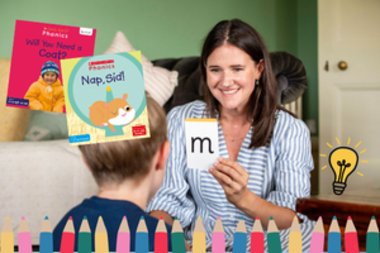8 reasons you shouldn’t panic about the new Multiplication Tables Check
Under the current National Curriculum, children are supposed to know their times tables up to 12×12 by the end of Year 4, although they are not formally tested on their tables other than through multiplication questions in the Year 6 maths SATs.
In September 2017 the Department for Education (DfE) announced a new Multiplication Tables Check (MTC) for primary children. The purpose of the MTC is to define whether Year 4 pupils can fluently recall their multiplication tables.
Subject to approval from Parliament, the MTC will be statutory from the 2019/20 academic year for all eligible year 4 pupils who are registered at maintained schools, special schools or academies (including free schools) in England.
The MTC will be available to take between 10-28 June this year as a voluntary check, and schools can decide whether they wish to participate and on what day. Here’s a summary of what’s involved:
- It is an online, on-screen digital assessment so children can take the MTC on laptops, desktops and tablets.
- Children will be randomly assigned a test equal in difficulty and there is no requirement that children in a class sit the test at the same time.
- The MTC takes less than five minutes to complete and children get 6 seconds to answer each question with a 3 second pause in-between each question.
- There are 25 questions and every question will follow the same format and will require the same type of response.
- There will always be questions from the 3, 4, 5, 6, 7, 8, 9, 11 and 12 multiplication tables in each check.
- There will be a maximum of 7 questions from the 2, 5 and 10 times tables and no questions from the 0 and 1 times tables.
- The 6, 7, 8, 9 and 12 times tables are more likely to be asked than the 2, 3, 4, 5, 10 or 11 as these are the ‘most difficult’ multiplication tables.
- Controversially, the MTC will only feature multiplication statements and so doesn’t include related division facts, a key part of children’s mathematical learning.
Panic stations?
Some teachers aren’t that keen on the new times tables tests and have decided to sweep them under the carpet this year. This is a bit odd given that times tables are a core component of basic maths skills and they aren’t going to evaporate into thin air any time soon.
The main reason why teachers are shunning the tests is because they are tests. It wouldn’t really matter what was being tested because they are opposed to yet more summative testing that won’t really tell them anything new.
But I disagree. I think the tests are a golden opportunity to get creative with times tables, plonk them centre stage, and make a bit of a song and dance about them but in a good way.
Do we need to panic?
Definitely not.
Times tables are necessary so let’s embrace them and just get on with it, and teach the value of perseverance and resilience too.
Here’s 8 reasons why we don’t need to press any red buttons and start running around like headless chickens:
1. Data is not published
Schools will be sweating that their results will be known to all. The guidance is very clear on this and should offer some reassurance: “School level results will not be published in performance tables.”
The MTC will be automatically scored and schools will be provided with the individual results, which will be available to selected users including Ofsted. National results will be reported by the DfE to track standards over time, so no great shakes.
2. You get to practice
Children get to practice and that’s a good thing because they need plenty of it. Whether there was a formal test or not, doing times tables are a ‘must-do’ job we commit to hammering away at every day anyway.
For the June test itself though, we do need to help children feel confident and that means getting familiar with the format. There will be the opportunity for children to access a practice area to become familiar with the style of the MTC before the test window opens each year. This should calm nerves and help children get used to reading, recalling and entering answers in a time limit.
It makes sense therefore to start early and access quality resources to practice answering at least 25 questions in quick succession against the clock.
3. Children get to compete
Competition is sometimes a bit of a dirty word but children thrive when challenged and relish the opportunity to duel mathematically with each other. Stirring children’s interest in times tables can be done by encouraging them to compete using digital resources that reward speed and fluency.
There’s nothing wrong with going head to head if it improves their response times because if a pupil takes more than a few seconds to answer a times table then they need further work on that times table. Children like to compete and will get better at their tables through purposeful practice.
4. No surprises
The cognitive demands of the test are no higher than what you would set for a weekly times table check as the content domain is based on the national curriculum. They are well within the grasp of children; there are no ‘trick’ questions and they do not need to be seen as a ‘threat’. The questions will be in no particular order and all questions are worth one mark.
The MTC is just another test and shouldn’t be anything special that children need to worry about. If anything, the MTC is the chance to really go for it so children can showcase their fluency and set some personal bests.
5. Say cheese
Remember, the MTC is only a snapshot. They take a photo of what children can do in that moment and don’t show the wider picture. Some children will do well, some won’t, and there will be a host of factors that feed into what they do on the day. This is no different from your Friday morning times tables test.
The guidance makes clear that the MTC “is not intended as a diagnostic tool” so there will be things missed and not picked up by the check in terms of what children know, don’t know and partly know. They provide teachers with information about how well they are teaching times tables, but only in part, as it will already be pretty obvious to you who is struggling and what common problems and misconceptions children have.
6. Children can’t fail
Children need to know that “it’s not the end of the world” if they don’t do as well as they hoped. There is no expected pass rate or threshold anyway. They do what they do on the day and no one is put on a ‘winners’ podium’.
The DfE will report on the performance of pupils nationally and in each local authority but so what?
7. They are just five minutes
Let’s get things into perspective. This is a quick test that is over and done with in just 300 seconds, and so is just a tiny part of the year.
The effort and preparation you go to needs to be kept in proportion, so don’t let it ruin your day and certainly don’t go over the top.
8. They make us better teachers
The MTC makes us stop and think about how we teach times tables and whether we give children a varied diet that stirs and stimulates. There are different ideas about what it means to be ‘fluent’ with times tables. A ‘testing, speed and memory’ approach works better for some pupils more than others, which is what the MTC is based on.
However, we can improve fluency through developing number sense and building conceptual understanding alongside memorisation and fast recall. The MTC gives us openings to diversify our teaching, not narrow it, and teach with inventiveness and creativity through games, puzzles, circuit training, songs, exercise and practical problem-solving, across the curriculum too.
A conceptual approach can develop at least as good “recall” of multiplication facts but this isn’t binary. All approaches should be explored so that strategic thinking, reasoning and meaning are part of the picture too.
Testing times
The MTC is nothing to get our pedagogical pants in a twist about because in the grand scheme of school life, the results won’t shake the foundations. The MTC should still be welcomed though because it keeps multiplication high profile and always on the table and up for discussion.
If children can learn all their times tables up to 12×12 and have a firm grasp of them, then they have a great foundation for doing arithmetic and maths for the rest of their lives. If this hasn’t happened by the age of 9, the maths Gods won’t be angry because some mathematical towers take longer to build than others. It takes time and plenty of repetition for most children to become proficient in their application of their tables and for some that might be when they are 45 years old.
Similar Posts
-

Supporting Students with Dyslexia in the Classroom
Specialist Dyslexia teacher assessor, Jo Rees, explains how teachers can support students with dyslexia in the classroom using the Scholastic Annotation Edition GCSE English Set Texts.
-

Alternative ways to keep children reading all year round!
Time to bring some literacy-themed fun into your classroom!
-

Phonics Books: What Parents Need to Know
Miss Mabel from Reading Roots explains how to choose the right books for early reading success
